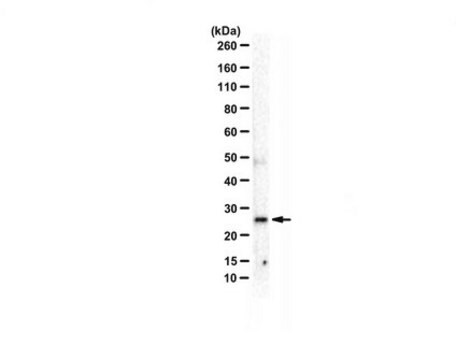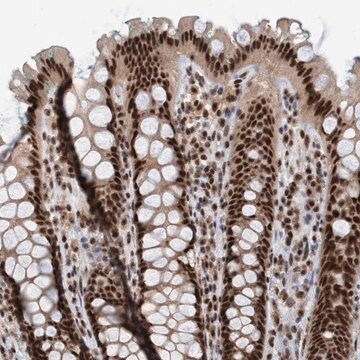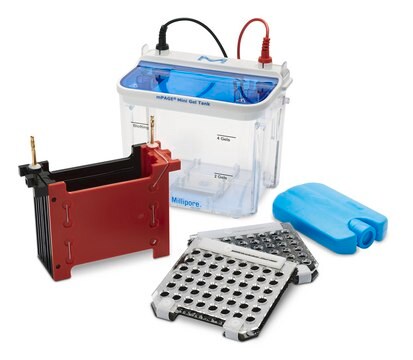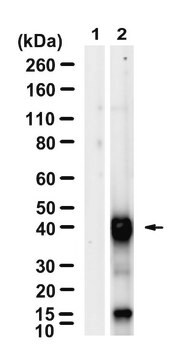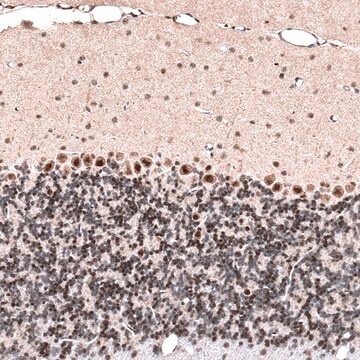Kluczowe dokumenty
SAB4200623
Anti-C9orf72 antibody produced in rabbit
affinity isolated antibody
Synonim(y):
3110043O21Rik, AI840585, ALSFTD, C9orf72, FLJ11109, FTDALS, RGD1359108, RP23-307M2.1, zgc:100846
About This Item
Polecane produkty
pochodzenie biologiczne
rabbit
Poziom jakości
forma przeciwciała
affinity isolated antibody
rodzaj przeciwciała
primary antibodies
Postać
buffered aqueous solution
masa cząsteczkowa
~55 kDa
reaktywność gatunkowa
human
stężenie
~1 mg/mL
metody
immunoblotting: 0.3-0.6 μg/mL using whole extracts of T98G cells
immunocytochemistry: 4-6 μg/mL using SH-SY-5Y cells
immunohistochemistry: 10 μg/mL using heat-retrieved formalin-fixed, paraffin-embedded human colon sections
numer dostępu UniProt
Warunki transportu
dry ice
temp. przechowywania
−20°C
docelowa modyfikacja potranslacyjna
unmodified
informacje o genach
human ... C9orf72(203228)
Opis ogólny
Specyficzność
Immunogen
Zastosowanie
- immunoblotting
- immunocytochemistry
- immunohistochemistry
Działania biochem./fizjol.
Postać fizyczna
Przechowywanie i stabilność
Oświadczenie o zrzeczeniu się odpowiedzialności
Nie możesz znaleźć właściwego produktu?
Wypróbuj nasz Narzędzie selektora produktów.
Kod klasy składowania
10 - Combustible liquids
Klasa zagrożenia wodnego (WGK)
nwg
Temperatura zapłonu (°F)
Not applicable
Temperatura zapłonu (°C)
Not applicable
Certyfikaty analizy (CoA)
Poszukaj Certyfikaty analizy (CoA), wpisując numer partii/serii produktów. Numery serii i partii można znaleźć na etykiecie produktu po słowach „seria” lub „partia”.
Masz już ten produkt?
Dokumenty związane z niedawno zakupionymi produktami zostały zamieszczone w Bibliotece dokumentów.
Nasz zespół naukowców ma doświadczenie we wszystkich obszarach badań, w tym w naukach przyrodniczych, materiałoznawstwie, syntezie chemicznej, chromatografii, analityce i wielu innych dziedzinach.
Skontaktuj się z zespołem ds. pomocy technicznej